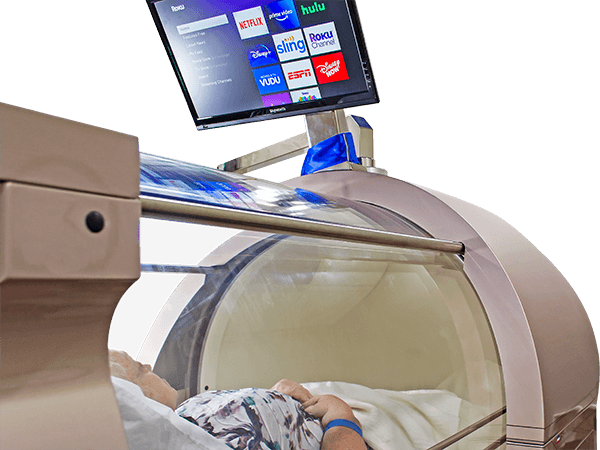Contents
Introduction:
A stroke arises when the brain is deprived of adequate blood supply, leading to oxygen deficiency. It can stem from various causes such as blood clots (ischemic stroke), bleeding into tissue (hemorrhagic stroke), or ruptured blood vessels (subarachnoid hemorrhage). Until the 1980s, the most prevalent stroke type, caused by arterial blood clots, lacked effective treatment until clot-dissolving medications were developed. Recent insights indicate that Hyperbaric Oxygen Therapy (HBOT) can benefit stroke patients at all stages: acute, subacute, and chronic phases. Thanks to the Natural Wellness & Pain Relief Center, patients in Fenton, MI, now have access to this therapy.
In the realm of medical treatments, hyperbaric oxygen therapy (HBOT) stands as a remarkable innovation, utilizing the healing potential of oxygen under increased pressure. This therapy has gained attention for its diverse applications and profound benefits across various medical conditions. In this article, we delve into the history, uses, and availability of hyperbaric oxygen therapy, shedding light on its transformative impact on healthcare.
History of Hyperbaric Oxygen Therapy:
Hyperbaric oxygen therapy’s origins can be traced back to the 1600s when a British clergyman named Henshaw constructed a sealed chamber to explore the effects of pressurized air on the human body. However, significant advancements in understanding hyperbaric oxygen’s therapeutic potential emerged in the mid-19th century. In 1879, French physiologist Paul Bert conducted groundbreaking experiments showcasing oxygen’s enhanced solubility under pressure, laying the foundation for modern hyperbaric medicine.
During World War I, hyperbaric chambers were employed to treat decompression sickness in deep-sea divers. Subsequent research broadened hyperbaric oxygen therapy’s scope to include various medical conditions, leading to its widespread adoption in the 20th century.
Benefits of HBOT for Stroke Management:
HBOT offers stroke patients a simple and low-risk therapy, making it accessible even to elderly patients or those with limited tolerance for intensive treatments. Patients undergoing HBOT for stroke rehabilitation often experience improvements in strength, endurance, balance, cognition, and motor skills, depending on the stroke’s location and size. Additionally, reduced pain, improved speech clarity, and enhanced activities of daily living are common outcomes. When combined with other therapeutic modalities, HBOT amplifies its benefits, aiding comprehensive stroke recovery.
Hyperbaric oxygen therapy involves breathing pure oxygen in a pressurized chamber, enabling the lungs to absorb higher oxygen levels than possible at normal atmospheric pressure. This increased oxygen concentration promotes healing and regeneration, making HBOT invaluable in treating numerous medical conditions. Fenton, MI residents can access this therapy at the Natural Wellness and Pain Relief Center, located near Fenton, MI in Grand Blanc.
To initiate the rewiring process, it’s crucial to stimulate the brain through consistent practice of rehabilitation exercises. For instance, if you’re aiming to regain movement in your legs, practicing leg movements repetitively is key to maximizing neuroplasticity. This repetitive practice is fundamental for recovery following a stroke.
After experiencing a stroke, your rehabilitation team will collaborate with you to establish a tailored plan addressing your individual goals for enhancing function and independence. Typically, this plan includes stroke exercises designed to enhance range of motion, muscle strength, walking ability, and performance of daily tasks. While repetitive practice is the primary driver of neuroplasticity, hyperbaric oxygen therapy can complement this process by expediting it.
By increasing oxygen availability in the brain, hyperbaric oxygen therapy can enhance the healing and regeneration of neural connections. Consequently, stroke survivors may experience accelerated progress in functional movement due to heightened neuron activity.
Although rehabilitation requires diligent effort, hyperbaric oxygen therapy can serve as a potentially impactful adjunct for stroke patients. Thankfully, at the Natural Wellness & Pain Relief Center, Fenton, MI residents can access both hyperbaric oxygen therapy and exercise instruction under one roof!



